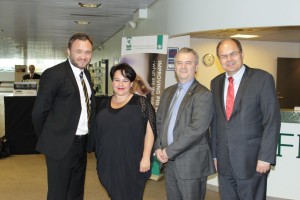PigWatch is a new ANIHWA project.
Abstract:
Tail biting and aggression between finishing pigs are injurious behaviours affecting health, welfare and productivity. Solutions to these behavioural problems have been researched extensively and include tail docking, provision of environmental enrichment and increasing group stability. However, their effectiveness differs considerably between research labs and commercial practice, and between farms. It is obvious that farmers themselves play a key role in the effectiveness of these ?standard recommendations?. Experimenting and sharing their experiences with scientists and advisors will help to progress existing knowledge into farm-specific tailor-made solutions.
To facilitate the exchange of ideas, and to monitor the effects of these solutions, it is important that there is a common definition and description of injurious behaviours. Therefore, together with pig farmers, PigWatch aims to develop and apply animal based measures to avoid the pain, frustration and negative emotional states associated with tail biting and aggression in finishing pigs.
As a starting point the knowledge generated in FareWellDock and EU Welnet will be used, as well as national initiatives from the participating countries. PigWatch continues these developments at two levels: on-farm and at the abattoir.
The first WP develops animal based warning signals to identify and, if possible predict outbreaks of tail biting or fighting on farm. This will allow farmers to respond to imminent problems before they get out of hand. It includes precision farming techniques for detection of behavioural activity, and lesion detection based on presence of haemoglobin. Finally, it develops protocols for visual scoring of behavioural and other warning signals.
The second WP uses animal based measures to monitor tail biting and skin lesion incidence through routine automated data collection at the slaughter plant. The data will facilitate comparisons (bench marking) between farms, and monitoring the effects of solutions over time. The technology is based on analysis of digital images of live pigs and carcasses. This will be developed in a laboratory setting, validated on a slaughter house and tested in a commercial situation.
The pig farming community will be involved through the whole project, via Farmer Focus Groups which help to develop and disseminate the innovative techniques proposed. PigWatch aims to do this in the five participating countries: France, Denmark, Switzerland, Germany and The Netherlands.
Principle investigator: Dr. Hans Spoolder, Wageningen UR Livestock Research (WLR), Netherlands
Project partners: INRA, FiBL, FBN, CEA LETI, DMRI







